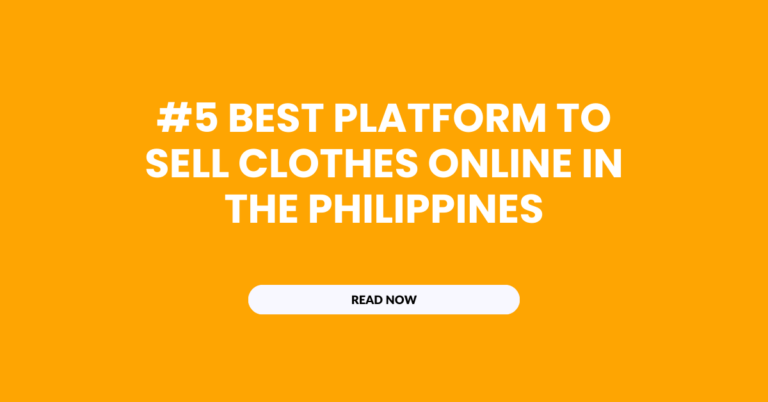61% of Filipinos are shopping online. The revenue is growing at 12.93% (CAGR 2023-2027) and will reach a market volume of $29.54 billion by 2027
Sell Anywhere with OLITT Shop
Online Shop
₱149.95/mo when you renew
- Sell Anywhere, Everywhere
- Free hosting
- Sell Unlimited Products
- Unlimited Storage
- Connect Custom Domains
- Ticket & Live Chat support
- SEO & Marketing tools
- Social Media Integrations
- HelpDesk/Livechat Integrations
- Google Analytics
- Accept online payments
- Multiple Shipping Option Supported
- 30-day money-back guarantee
Online Store FAQs
How much does it cost to start an online store in the Philippines?
Here’s a rough breakdown of the typical costs to start an online store in the Philippines:
- Domain name: $10-$30 per year, as mentioned.
- Web hosting: $60-120 per year for basic shared hosting. More for managed or dedicated plans.
- Ecommerce platform: Free for open source options like WooCommerce or Magento. Around $20-60 per month for hosted platforms like Shopify or BigCommerce.
- Payment gateway: 2-5% transaction fees. Popular options are PayPal, Dragonpay, Pesopay, GCash.
- Marketing costs: Can vary widely, but plan for at least $200-500 per month for digital ads, social media, SEO etc.
- Inventory and shipping: Highly dependent on your product costs and volumes. But allocate at least a few thousand dollars for initial inventory purchases.
- Business registration fees: Around $100-$200 for registering with DTI, taxes, permits.
- Miscellaneous costs: Logo design, packaging, office supplies, software, legal fees etc can add up to several hundred dollars more.
So the bare minimum to launch a basic online store in the Philippines would likely be around $500-1000 or 25,000-50,000 PHP for the first year, not including inventory and operating expenses. Most successful ecommerce businesses spend thousands more on marketing, development and operations.
Is an online store profitable in the Philippines?
An online store can certainly be profitable in the Philippines, but there are a few key factors to consider:
- Product-Market Fit – Ensure you are selling products that Filipinos need/want at attractive prices. Research your target customer demographics.
- Marketing – You’ll need solid digital marketing skills and budget to acquire and retain customers online in a competitive landscape. SEO, social media and paid ads are key activities.
- Logistics – Order fulfillment and shipping needs to be efficient and cost-effective. Leverage fulfillment centers or integrated logistics services.
- Payment Methods – Offer popular local payment options like cash-on-delivery, debit/credit cards, e-wallets, installment plans. This improves conversion rates.
- Customer Service – Provide responsive customer support and quick resolution of issues to ensure repeat business.
- Mobile Optimization – Over 70% of e-commerce traffic in the Philippines comes from mobile devices, so having a seamless mobile experience is crucial.
- Competition – The ecommerce scene is getting more crowded, so you need to differentiate yourself and build loyalty.
With the right business model, execution and funding, an online business in the Philippines can certainly thrive and be highly profitable. But it requires significant effort especially in the first few years to establish the operations and win market share. The long term outlook remains positive given the country’s demographics and increasing internet penetration.
Setting up your website for success
Setting up your online store website for success is not a difficult task, but it does require some planning. The key is to know what you want to sell, who you want to sell it to, and what will make your store stand out from the rest.
For example, if you are selling clothes then consider using a platform like Shopify or WooCommerce. If you are selling food or drinks then Shopify might not be the right choice for you because of the fees associated with Shopify.
How to Market Your Business Online in the Philippines
Marketing your business online in the Philippines can be an exciting and rewarding endeavor. With a population of over 100 million people and a growing internet penetration rate, the opportunities for reaching your target audience are endless. Here are some tips to help you market your business effectively online in the Philippines.
Firstly, make sure to have a strong online presence by creating a professional website and optimizing it for search engines. This will help potential customers find your business when they search for relevant keywords. Additionally, consider utilizing social media platforms such as Facebook, Instagram, and Twitter to engage with your target audience and promote your products or services.
Secondly, take advantage of local directories and review sites. Filipinos heavily rely on these platforms to find businesses and read reviews before making purchasing decisions. Make sure to list your business on popular directories like Google My Business, Yelp Philippines, and Yellow Pages Online. Encourage satisfied customers to leave positive reviews to boost your credibility.
Lastly, consider partnering with influencers or bloggers who have a significant following in the Philippines. Collaborating with them can help increase brand awareness and reach new audiences that align with your target market.
Why Does Every Business Need a Website?
A website is the most effective way for a business to reach out to its audience, generate leads and increase revenue. It is also one of the key factors that drive customer loyalty.
A website allows businesses to present themselves in a professional manner, which gives them an edge over their competitors.
How to Create an Efficient & Profitable Online Store with B2B/B2C Businesses
The first step in starting a business is to decide what you want to sell.
When it comes to selling products online, there are two types of businesses: B2B and B2C. A B2B business sells products or services for other companies, while a B2C business sells products or services for consumers.
The difference between the two types of businesses is how they sell their products and services. With a B2B business, the company that is being sold to has already established itself in the market with its own brand and customer base, while with a B2C business, the company that will be selling the product already has no presence in the market before its launch.
How to Start an Online Store in the Philippines
Here is a step-by-step guide to starting an online store in the Philippines:
- Choose a business structure and register your business. Common options are sole proprietorship, partnership, or corporation. Register with the DTI and BIR.
- Get any required permits and licenses for your specific products or services.
- Select your online store’s domain name and register it. Choose something brandable and easy to remember.
- Set up web hosting and install your ecommerce platform. Popular options like WooCommerce and Shopify have easy installs.
- Customize the design and setup of your online store. Make sure it is visually appealing and intuitive to navigate.
- Add products to your store, writing descriptions, setting prices and inventory levels. Focus on a specific niche at first.
- Set up your payment gateway and preferred payment methods like credit card, PayPal, bank transfer etc.
- Select reliable shipping couriers and set up delivery timelines and costs. Offer tracking.
- Market your new online store through SEO, social media, online ads, influencers, promotions etc.
- Provide excellent customer service via phone, email, chat, social media to build loyalty.
- Analyze sales and metrics to fine-tune your product selection, prices, promotions over time.
- Grow your product catalog and operations. Automate processes where possible.
Following these steps with dedication and hard work can help launch and steadily grow an online business in the Philippines. Stay nimble, test new ideas, and always focus on delivering value for customers.
Is dropshipping illegal in the Philippines?
No, dropshipping is not illegal in the Philippines. However, there are some important legal considerations for running a dropshipping business in the Philippines:
- Business Registration – You still need to properly register your business and get any required licenses/permits even if you don’t keep stock.
- Taxes – As a business owner, you are responsible for paying income tax, value-added tax (VAT) and other applicable taxes. Keep records of transactions.
- Customs Regulations – Most dropshipped goods will be imported into the Philippines. Ensure your suppliers properly declare items and pay any customs duties/taxes.
- Consumer Protection – Don’t make false claims about products. You’re responsible for issues like defective/fake goods, non-delivery, false advertising etc.
- Data Privacy – Comply with the Data Privacy Act regarding collection and handling of customer data. Get consent.
- Receipts/Invoices – Issue proper receipts/invoices to customers for their records and any returns/warranty claims.
As long as you comply with all applicable laws and regulations, then dropshipping is allowed in the Philippines. Be very careful in vetting your suppliers and provide good customer service/support. Maintain accurate records of sales and taxes. Consult an accountant for advice.
The key is full transparency with your customers that you are dropshipping items and taking responsibility for the customer experience. Done properly and ethically, dropshipping can be a profitable ecommerce model in the Philippines.
How long does it take to build an online business?
It takes time to build an online business. It takes a lot of time and effort to get started.
In order to start an online business, you need to have a clear vision of what you want your business to be. You need a plan on how you will generate revenue, how you will market your product or service, and how you will reach out to customers.
It is important that the first step in the process is getting clarity of what it is that you are trying to accomplish with your online business. This can help reduce the amount of wasted time and effort that goes into building something that may not work for your goals.
How can I start a small business online with no money in the Philippines?
Here are some ideas for starting an online small business in the Philippines with low or no upfront capital:
- Offer services on freelancing sites like Upwork, Fiverr, OnlineJobs.ph. Things like data entry, virtual assistance, web design, writing, translation, graphic design, programming etc.
- Sell your own knowledge, skills or expertise by creating online courses and selling on platforms like Teachable, Udemy, Skillshare. Teach things you’re passionate about.
- Start a blog or YouTube channel in a niche you enjoy, and monetize it with affiliate marketing, display ads. Build traffic through great free content first.
- Resell products online that you can access at wholesale or discounted prices. For example, buy items from Divisoria then resell on Lazada, Shopee, Facebook.
- Provide professional services online like bookkeeping, social media management, customer service etc leveraging your skills.
- Start a dropshipping store with products from suppliers that offer payment terms like Alibaba. Minimize upfront inventory costs.
- Offer local services through apps like Grab, Angkas, PayMaya etc. Leverage assets you already own like a car or motorcycle.
- Flipping or reselling items from garage sales, second hand stores on sites like Carousell, Shopee.
The key is to start small, provide real value, reinvest profits into growth, and leverage skills, assets or access you already have. With some hustle, creativity and business savvy, you can bootstrap an online business on a shoestring budget.
Related articles:

#5 Best Platform To Sell Clothes Online In The Philippines
Last updated on July 6th, 2024 at 06:33 amLooking for the best platform to sell clothes online in the Philippines? Because trends are ever-changing and thrifting has increased in popularity, now is an excellent moment to get started with this business. The Philippines’ rapidly increasing e-commerce market is a profitable potential for individuals and businesses …
Continue reading “#5 Best Platform To Sell Clothes Online In The Philippines”

Where To Get Suppliers For Online Business Philippines
Last updated on July 6th, 2024 at 06:12 amIn recent years, the Philippines has seen a significant rise in online businesses, also known as ecommerce. More and more people are turning to the internet to buy and sell goods and services. This growth reflects the changing landscape of how Filipinos shop and conduct business. Now, …
Continue reading “Where To Get Suppliers For Online Business Philippines”

Best Platforms For Selling Cars Online In The Philippines
In the Philippines, selling cars online has become more popular, and there’s a good reason behind it. With more people having access to the internet and smartphones, the world of auto sales is changing. If you’re thinking about starting your own car-selling business, you’re in the right place. The Rise of Online Auto Sales Gone …
Continue reading “Best Platforms For Selling Cars Online In The Philippines”

Can you sell products on a .net website?
Can you sell products on a .net website? With the popularity of .com sites for ecommerce, some may wonder if you can actually sell products and services on a .net website. The short answer is yes, you definitely can. .net domains have traditionally been used for things like personal sites or community sites rather than …